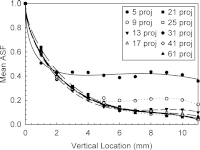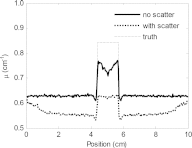A review of breast tomosynthesis. Part I. The image acquisition process
- PMID: 23298126
- PMCID: PMC3548887
- DOI: 10.1118/1.4770279
A review of breast tomosynthesis. Part I. The image acquisition process
Abstract
Mammography is a very well-established imaging modality for the early detection and diagnosis of breast cancer. However, since the introduction of digital imaging to the realm of radiology, more advanced, and especially tomographic imaging methods have been made possible. One of these methods, breast tomosynthesis, has finally been introduced to the clinic for routine everyday use, with potential to in the future replace mammography for screening for breast cancer. In this two part paper, the extensive research performed during the development of breast tomosynthesis is reviewed, with a focus on the research addressing the medical physics aspects of this imaging modality. This first paper will review the research performed on the issues relevant to the image acquisition process, including system design, optimization of geometry and technique, x-ray scatter, and radiation dose. The companion to this paper will review all other aspects of breast tomosynthesis imaging, including the reconstruction process.
Figures





References
-
- NCI-funded Breast Cancer Surveillance Consortium co-operative agreement, “Performance Measures for 1,960,150 Screening Mammography Examinations from 2002 to 2006 by Age - based on BCSC data as of 2009,” November 15, 2011 [accessed April 26, 2012]; Available from: http://breastscreening.cancer.gov/data/performance/screening/2009/perf_a....
-
- Carney P. A., Miglioretti D. L., Yankaskas B. C., Kerlikowske K., Rosenberg R., Rutter C. M., Geller B. M., Abraham L. A., Taplin S. H., Dignan M., Cutter G., and Ballard-Barbash R., “Individual and combined effects of age, breast density, and hormone replacement therapy use on the accuracy of screening mammography,” Ann. Intern Med. 138, 168–175 (2003). - PubMed
-
- Ning R., Conover D. L., Chen B., Schiffhauer L., Cullinan J., Ning Y., and Robinson A. E., “Flat-panel-detector-based cone-beam volume CT breast imaging: Phantom and specimen study,” Proc. SPIE 4682, 218–227 (2002).10.1117/12.465562 - DOI
Publication types
MeSH terms
Grants and funding
LinkOut - more resources
Full Text Sources
Other Literature Sources
Medical

